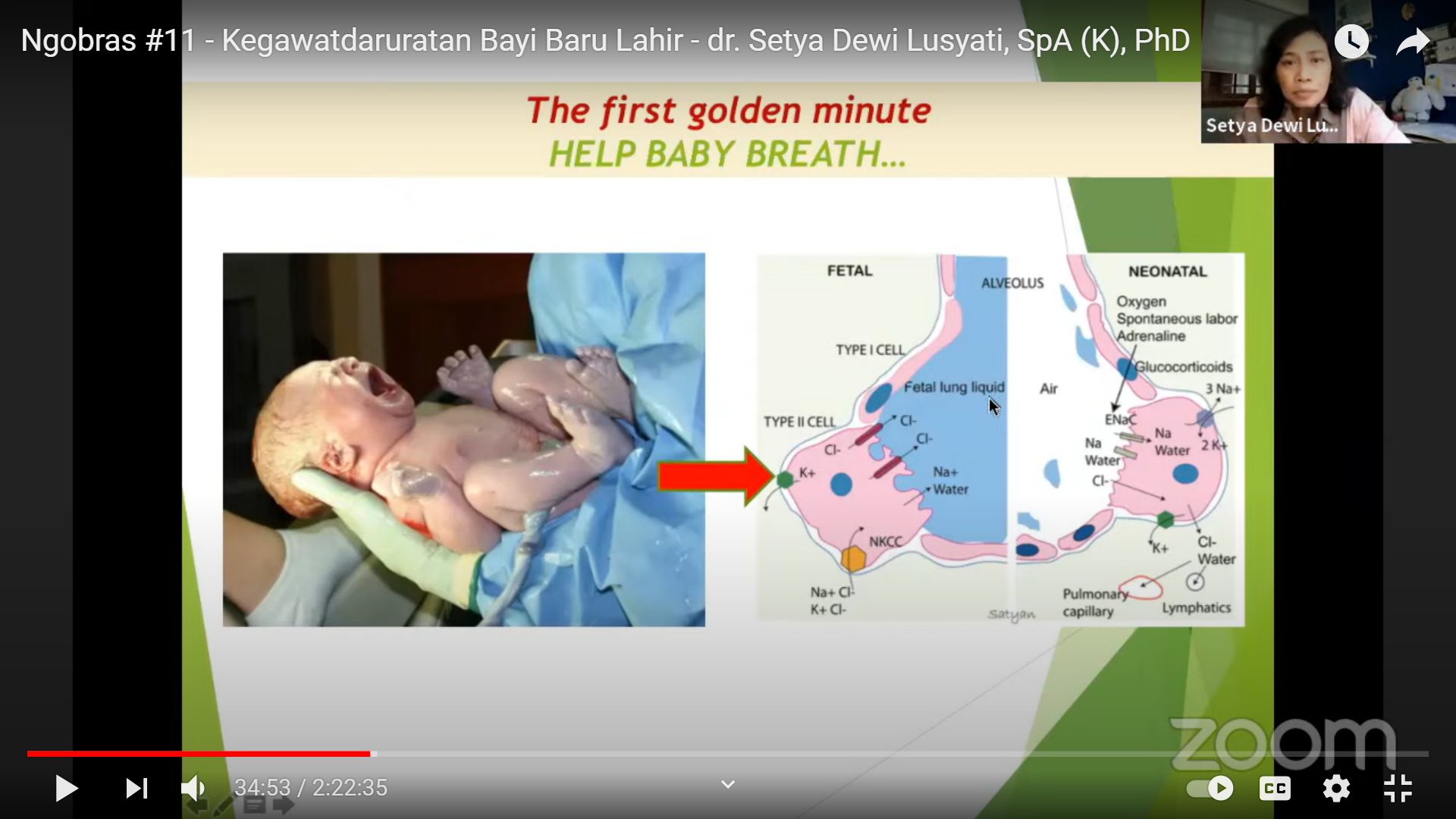UNAIR NEWS – Ksatria Airlangga Floating Hospital (RSTKA) held an event titled Casual Chat with Experts on Sunday, May 9, 2021. For its 11th organization, the event discussed emergencies on newborns.
As a speaker, dr. Setya Dewi Lusyanti, Sp.A (K), PhD presented material on “Most Frequent Emergencies Early Detection and Early Treatment Principles of Neonates,” or newborn babies.
According to her, the emergency in newborns (neonates) can vary. One of them is related to breathing. Fetus and newborn have differences in the use of lungs as a means of breathing. The fetus only uses its lungs with a 10% capacity to help it breathe.
Exchange of oxygen and carbon dioxide in the fetus as part of the respiratory process, occurs in the placenta.
“So that he gets oxygen and CO2 (carbon dioxide, ed), the gas exchange in the placenta which functions as the lungs of the fetus. From the placenta, oxygen flows from the mother, “said dr. Lusy.
In the fetus, the lungs will fill up completely with fluid. Therefore, the fetus really relies on the placenta for respiration.
After the fetus is born, it will be separated from the placenta. Thus, newborn babies do not get oxygen supply so they (newborn babies, ed) must be able to breathe on their own. “So that’s where there is a change after birth and the baby must be able to go through this transitional period well,” said dr. Lusy.
One of the important things during this transitional period is crying. dr. Lusy revealed that the purpose of crying babies is to bring air with high pressure into the breathing apparatus.
The crying of the baby then causes the fluid in the lungs to be pushed out. “If he’s not crying, that means there isn’t a pressure pushing the fluid out so he’ll have trouble breathing.”
“Almost all newborns need some help to get the baby to breathe, which must be done within the first minute. Therefore, for every delivery, the Ministry of Health does not allow a midwife to take care of the mother and baby in turns. So someone has to take the baby and help the baby if he needs it. The midwife should stay beside the mother, “said dr. Lussy.
The emergencies on newborns can also be in the forms of fetal distress and early pregnancy. “This fetal distress indicates that the fetus is deprived of oxygen and causes the amniotic color to turn green. Small pregnancy proves that the transfer of blood that delivers oxygen and nutrients through the placenta is greatly reduced,” explained the doctor who graduated from the Faculty of Medicine, Universitas Airlangga (FK UNAIR).
UNAIR as one of the best universities in Indonesia supports all academicians to contribute to the wider community.
Author: Fauzia Gadis Widyanti
Editor: Khefti Al Mawalia





